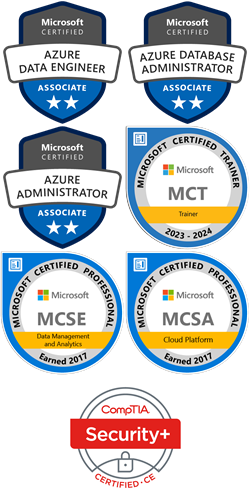Several months ago, I discussed my customer’s intention to enable trace flag 3625. Since that time, we have observed an intriguing phenomenon when encountering a login failure. To demonstrate this, our initial step is to ensure we are capturing failed login attempts. In Server Properties, select the Security tab, click on Failed Logins Only, and then click OK. Next, we need to test the login failure. We can also verify the failure in the SQL Server error log. Now we need to enable Trace Flag 3625. Refer to my previous article for detailed instructions. We know that failed logins will...
Continue reading...Configuration
How to Test Trace Flag 3625
UPDATED Jan 4, 2024 – Several people had mentioned they could not get the example code to work. This was because I chose to overflow a text column which only outputs the detailed error messages for SQL Server 2017 and above. I have since updated the code to use a numeric value which has been verified to work on SQL Server 2012 through 2022. Recently, one of my customers considered enabling Trace Flag 3625 on one of their SQL Servers, but they wanted a way to quickly test its functionality beforehand. For those of you that are unfamiliar with that...
Continue reading...Get Certificate Details for SQL Encryption In-Transit Using PowerShell – UPDATED
In a previous blog post, I showed you how to use PowerShell to retrieve the details of the certificate being used for encryption-in-transit, aka TLS encryption. I have received a lot of feedback about that script and one of the most common requests was how to run it remotely. I have finally modified the script to do just that. The previous version required you to run it locally on a server. It would return the certificate information for each SQL instance that it detected. The new version can be run remotely, but it will expect you to pass in a...
Continue reading...Get Certificate Details for SQL Encryption In-Transit Using PowerShell
There is an updated version of this script here. In my opinion, all customers should be encrypting connections to their SQL Servers to secure data in-transit, but that’s a discussion for another day. Today, I wanted to discuss how you can use PowerShell to lookup details on the certificate being used for that encryption. For this example, we have three SQL Server instances each configured slightly different for encrypted communication. Using the SQL Server Configuration Manager, we can see the first instance is configured to use a certificate named “deathstar.govlab.corp (SHA256)”. The FORCE ENCRYPTION option is set to YES to...
Continue reading...Finding the NTFS Allocation Unit Size for Mount Points
The 64Kb Allocation Unit size is one of the easiest SQL Server best practice items to complete during your new builds, but from time to time, I still see this one overlooked. And I know this topic has been beat to death over the years, so we are not going to cover the why you should format volumes using 64Kb Allocation Size. We are just going to cover how to check the current value. In our setup, we have a server with 4 disks attached; two are mounted with drive letters (M: and S:) and two are mounted as folders...
Continue reading...





